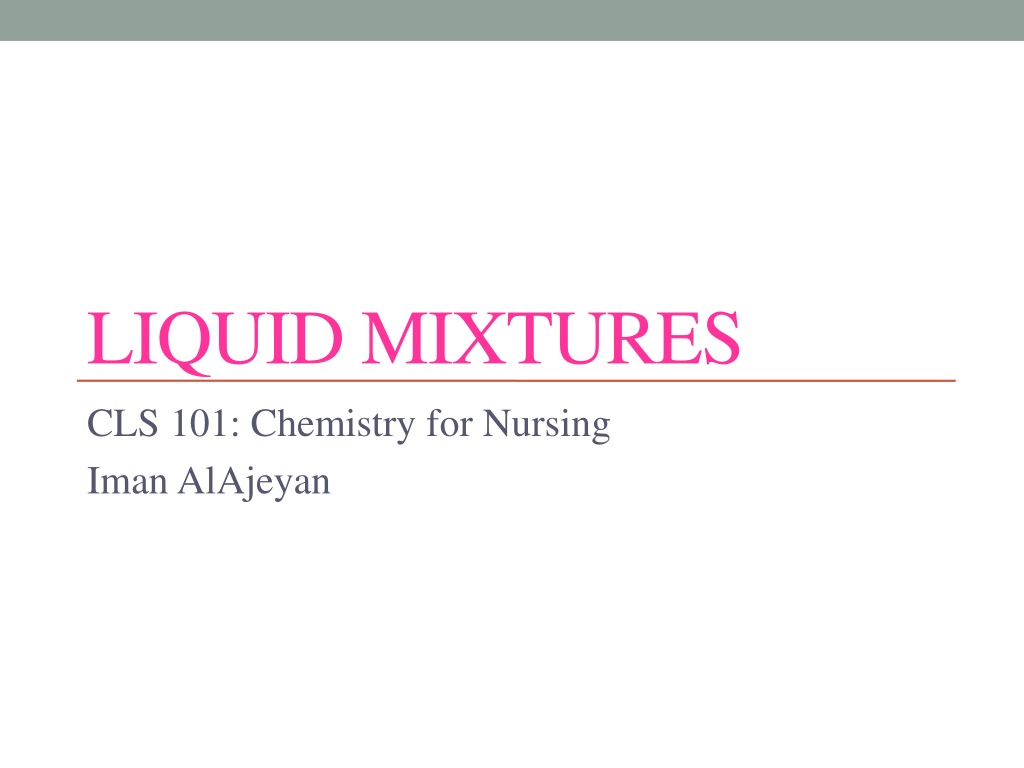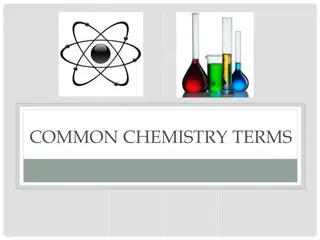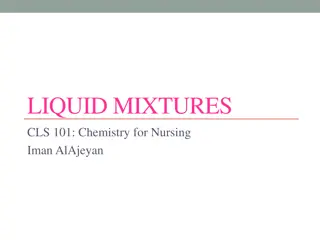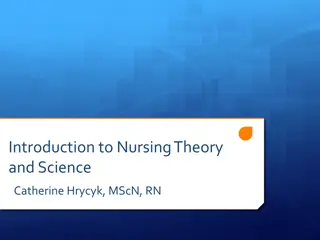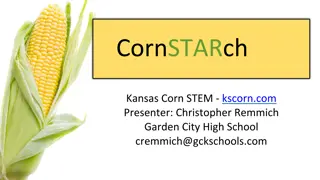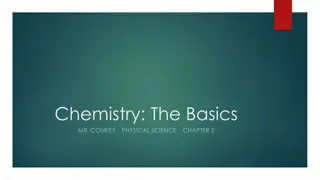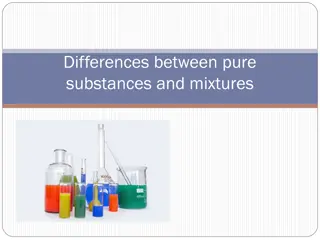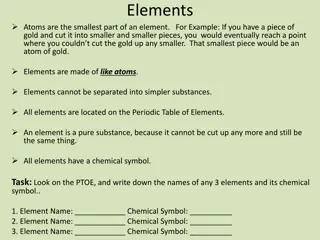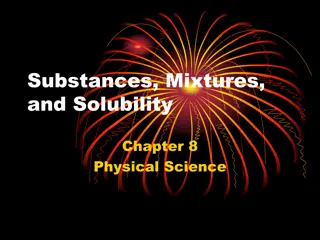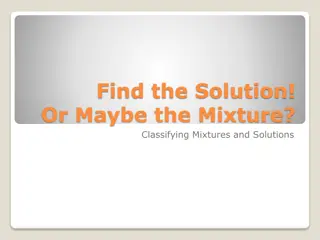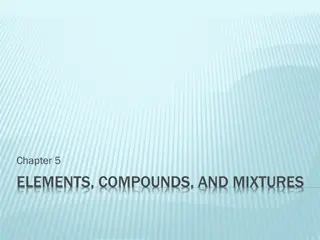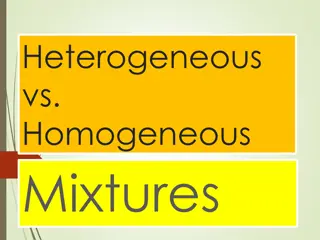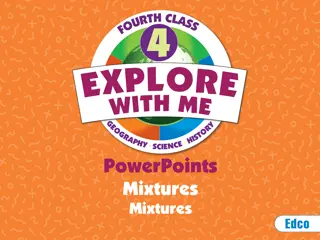Understanding Liquid Mixtures in Nursing Chemistry
A comprehensive overview of liquid mixtures in nursing chemistry, including types of mixtures, properties of solutions and suspensions, and the distinction between homogeneous and heterogeneous mixtures. Explore the concepts of solutions, suspensions, colloids, and emulsions with clear explanations and visual aids. Enhance your knowledge of the composition and behavior of different types of liquid mixtures relevant to nursing practice.
Download Presentation

Please find below an Image/Link to download the presentation.
The content on the website is provided AS IS for your information and personal use only. It may not be sold, licensed, or shared on other websites without obtaining consent from the author. Download presentation by click this link. If you encounter any issues during the download, it is possible that the publisher has removed the file from their server.
E N D
Presentation Transcript
LIQUID MIXTURES CLS 101: Chemistry for Nursing Iman AlAjeyan
Mixtures A mixture is a material system made up by two or more different substances which are mixed together but are not combined chemically. The air is a mixture of gases, largely nitrogen, oxygen, and carbon dioxide, along with smaller percentages of other substances.
Liquid Mixture There are 4 types: Solutions Suspensions Colloids Emulsions
A homogeneous & A heterogeneous mixture http://t3.gstatic.com/images?q=tbn:ANd9GcTNk-4vyioIbnwEgZyLxyLWNztctkK1IpGt0_1kvn9YSnS6ktd2hFqiM8c A homogeneous is a substance that is uniform in composition A heterogeneous mixture of large solid substance in another substance made by mechanical agitation
Solutions A solution is a homogeneous (A substance that is uniform in composition) mixture of one or more substances called solutes dissolved in another substance called the solvent. The solute can be solid, liquid, or gas but the solvent is always a liquid. E.g. salt solution, sugar solution,...
Solution When the 2 substances totally mix it is called a solution E.g. Solute + Solvent = Solution ) sugar) + (water) = Solution File:SaltInWaterSolutionLiquid.jpg We then say sugar is soluble in water, it has dissolved An aqueous solution is one in which water is the solvent.
Properties of a Solution 1. Consists of a solute and a solvent. 2. Have variable composition. 3. Clear. 4. Homogenous. 5. Do not settle. 6. Can be separated by physical properties. 7. Can pass through filter paper.
Suspensions A suspension is a heterogeneous mixture of large solid substance in another substance made by mechanical agitation. The substances distributed in the background material is not dissolved and will settle out unless the mixture is constantly shaken.
The size of the particles is great enough so they are visible to the naked eye. The solute is always a solid substance but the solvent can be solid, liquid, or gas. E.g. mud in water, flour in water, some medicines, dust or water in air,...
Properties of a Suspension 1. Consists of a solid in a solvent. 2. Heterogeneous. 3. Not clear. 4. Settle. 5. Do not pass through filter paper or membranes.
Colloids Is a homogeneous solution with intermediate particle size between a solution and a suspension. The solute can be solid, liquid, or gas substance AND the solvent can also be solid, liquid, or gas. E.g. Foam (Whipped cream), Gel (jelly), smoke, blood,...
Examples of Colloids GAS LIQUID SOLID GAS NON Liquid Aerosol E.g.: fog, mist, hair sprays Solid Aerosol E.g.: smoke, cloud, air particulates. LIQUID Foam Emulsion Sol E.g.: whipped cream, shaving cream. E.g.: milk, mayonnaise, hand cream E.g.: pigmented ink, Blood SOLID Solid Foam E.g.: Marshmallow, pumice Gel Solid sol Example: Certain alloys E.g.: agar, gelatin, jelly.
Properties of a Colloid 1. Can be homogenous. 2. Do not settle. 3. Pass through filter paper but NOT membranes.
Emulsions Emulsion is a mixture consists of two or more liquids that do not mix. There are two kinds of emulsions. An emulsion that settles is called temporary emulsion. An emulsion that doesn t is called permanent emulsion. E.g. oil and vinegar.
